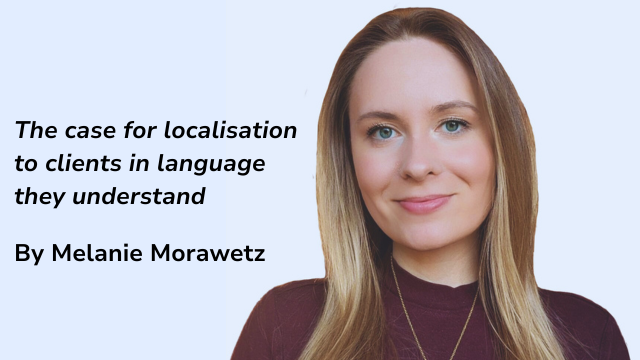-
QUALIFICATIONS
- For Linguists Worldwide
- For UK Public Services
- Preparation
- Policies & Regulation
-
MEMBERSHIP
- Join CIOL
- Professional Membership
- Affiliate Membership
- Chartered Linguist
- Already a member?
- Professional conduct
- Business & Corporate Partners
-
LANGUAGE ASSESSMENTS
- English
- All Other Languages
-
CPD & EVENTS
- Webinars & Events
- CIOL Conferences
- Networks
- CIOL Mentoring
-
NEWS & VOICES
- News & Voices
- CIOL eNews
- CIOL Awards
- The Linguist Magazine
- Jobs & Ads
-
RESOURCES
- For Translators & Interpreters
- For Universities & Students
- Standards & Norms
- CIOL & AI
- All Party Parliamentary Group
- In the UK
- UK Public Services
- Find-a-Linguist
Authentically different
by Annie Rutherford
 Why Annie Rutherford added linguistic diversity to her translation of The Peacock, and how she approached the Scots text
Why Annie Rutherford added linguistic diversity to her translation of The Peacock, and how she approached the Scots text
It’s a strange thing: as a reading public, we think nothing of British novels set in Botswana, France or Brazil – and yet with translated books there’s an expectation for them to function as ambassadors for the countries they’re from. When we come across a translated novel set in the UK, we find ourselves startled, at best. So when I told people I was translating a novel set in Scotland, I got some baffled reactions. “You’re translating into… which language?” people would ask.
Isabel Bogdan’s The Peacock was a bestseller and booksellers’ favourite in its native Germany. The comedy of errors is set over the course of a bankers’ team-building weekend at a dilapidated castle in a “little glen at the foot of the Highlands”. Bogdan’s familiarity with the region is evident in her playful descriptions. Nonetheless, translating the book into English posed various challenges that the author didn’t face in the original – as the publisher, Katy Derbyshire, acknowledged when she originally approached me.
“I want the Scottish characters to sound Scottish and the English to sound English (and the Polish to sound Polish), and I want the humour to work in English,” she explained.
The novel brings together characters from various backgrounds – geographically and also in terms of age and class. Lord and Lady McIntosh (who own the castle), their housekeeper and the Polish estate manager are joined by investment bankers from London, who are accompanied by a cook and a young team-building facilitator. There is little differentiation between the characters’ voices in the original and certainly no use of dialect. This is hardly surprising – reading in the other direction, I’ve noticed that German translations of British books rarely seem to reproduce dialects.
However, it was clear that for the English translation to succeed, it would be key to create believable voices for everyone – from David, the shy Cambridge alumnus, to Aileen, the housekeeper who has never felt the need to leave the glen where she grew up. As a result, I decided very early on to use Scots English for Lord and Lady McIntosh and Aileen.
Creating character dialects
Scots English (or Scottish Standard English) exists on a spectrum with Scots, a West Germanic language variety. It has a distinct phonology from English and draws on Scots vocabulary, but is closer to English grammar and orthography than to those of Scots. (There are exceptions though: Scots English often uses the present participle where English would use the past, for example.) The vocabulary of Scots English varies across different regions, and writing in both Scots and Scots English can be fraught, as the Scots language lobby is vocally protective of the varieties, which have long been minoritised.
This wasn’t the first time that I’ve translated into Scots English – I did so when translating an extract from Arno Camenisch’s The Last Snow. The context was rather different though: in The Last Snow, Scots words stand in for Swiss German, recreating Camenisch’s multilingualism. In The Peacock, I was translating the British characters ‘into’ their own dialects and producing a linguistic diversity which doesn’t exist in the original.
The Peacock is mainly narrated through internal focalisers, with different scenes told from the perspective of different characters (although always in the third person). With one significant exception, the dialogue is entirely in indirect speech. On one level, this style allowed me a certain flexibility. The fact that Aileen’s speech is never quoted word for word enabled me to soften her Scots into Scots English (at one point “Jim hadn’t understood her first sentence because of her broad Scots accent”).
In this way I could keep the orthography of her speech consistent with the rest of the text and ensure these sections remained accessible to a readership beyond Scotland. For example, we learn that “She still had plenty of time to have weans, and she wasn’t worried about finding the right man to start a family.” If I’d been working in Scots, this might have become “She still had plenty o time to hae weans, and she wisnae fashed aboot findin the right man to stairt a family.”
I had a choice of Scots words for ‘children’: ‘bairns’ tends to be used more on the east coast, while ‘weans’ spills out into the regions around Glasgow. There’s also a generational difference, and as Aileen is younger, ‘weans’ feels more natural, particularly imagining the book to be set around the Trossachs (about 30 miles from Glasgow).
The subtlety of regional markers
I realised that the voice I used for a character in any indirect speech had to be consistent with the voice when the story was narrated from that character’s perspective. So I moved away from stylistic consistency across the whole text in favour of consistency within individual voices. This didn’t only affect dialect words; the McIntoshes and Aileen refer to the family’s animals using the pronouns ‘he’ or ‘she’, while the visiting bankers stick with the less familiar ‘it’.
Regional markers are often a lot more subtle than the obvious dialect words. While the McIntoshes refer to the ‘glen’ and the bankers talk about the ‘valley’, I was more interested in the regional use of words such as ‘living room’/’sitting room’/’lounge’. While working on The Peacock, I consumed as much Scottish media as possible, trying to tease out the different elements in my own vocabulary – listening to BBC Scotland, revisiting favourite authors and paying close attention when chatting to my elderly neighbours. (And yes, I also watched the well-known comedy-drama Monarch of the Glen.)
I utilised social media for anecdotal research on which words people from different regions use. ‘Sitting room’ turned out to be more typical of speakers from the south of England, while ‘living room’ is more frequently used by Scots. English speakers more often refer to the evening meal as ‘dinner’, while Scots tend towards ‘tea’ – unless people are dining out or having guests over, in which case ‘tea’ becomes ‘dinner’.
One translation choice was more of a cultural translation – and one I had to defend a couple of times. In the original, the McIntoshes live in a Herrenhaus (‘manor house’/’mansion’). I have never heard the word ‘manor house’ used to refer to a house in Scotland – to my mind it conjures images of Agatha Christie and Middle England. ‘Mansion’ is less jarring geographically, but still has nothing to do with the kind of place that the McIntoshes live in – a relic of Scotland’s feudal system, defined more by its age (the oldest parts of the building date back to the 17th century), and the fact that it belongs to the local landowner or Laird, than by any potentially imposing appearance. Castles like this are dotted about the Scottish countryside and are just that – castles – unless, like Aileen, you live nearby or work on the estate, in which case they are simply ‘the big house’.
As a speaker of Scots English, I often find that I am editing myself as I write, reluctantly removing words like stramash (‘uproar’/’row’) from my translations. At other times, I have polite stand-offs with editors about phrases which apparently sound strange to non-Scottish ears. Yet why shouldn’t we translate into this colourful, expressive, humorous language? In this sense, translating into Scots English for so much of The Peacock was a joyful release – and something I hope to do more of in future.
Filter by category
More
The Chartered Institute of Linguists (CIOL), Incorporated by Royal Charter, Registered in England and Wales Number RC 000808 and the IoL Educational Trust (IoLET), trading as CIOL Qualifications, Company limited by Guarantee, Registered in England and Wales Number 04297497 and Registered Charity Number 1090263. CIOL is a not-for-profit organisation.








